The Expanded Railroad Glossary Part 3 in Tales of the Jointed Track
- Sept. 4, 2014, 3:13 p.m.
- |
- Public
Locomotive trucks… a small lesson. No this is not like a pick up or a semi rig. The Truck is what the locomotive or a freight car rides on.
EMD switcher and “B” (four axle) trucks:
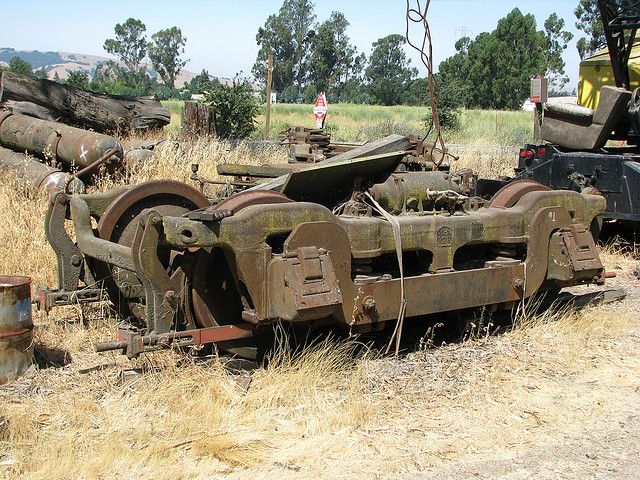
This is an old friction bearing switcher truck. Its been in the weeds for some time. You can see the side frame between the Journal boxes. There is another on the inside,just behind the journal box and the truck frame. The brake cylinder sets on top. The pistons came out on both sides of the cylinder.The long rod or lever, is the slack adjustment for the brakes.

another view. There is a traction motor installed. The open hatch to the left is where the brushes are placed for the armature. Directly below is the hanger or traction motor suspension bearings. It has seen better days, and will become scrap sooner than later.
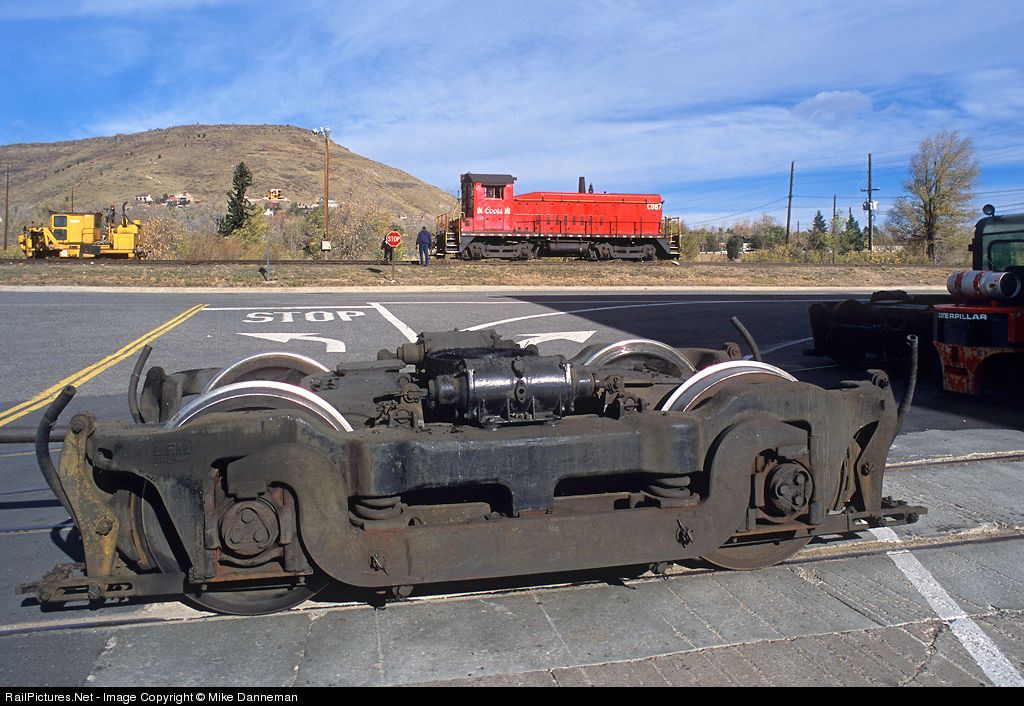
This a roller bearing switcher truck. the brake cylinder is visible. You can see that the cylinder houses two pistons and air forces each side outward. The flanges look high, and will either get a wheel change out or be turned to tolerance on a wheel lathe. Yes the switcher says COORS on it. This is the brewery owned railroad that switches out the brewery proper. This truck will most likely be rebuilt. The wheel sets taken out and replaced. They will send the old set in for truing. I doubt their facility has the table or wheel lathe on premises
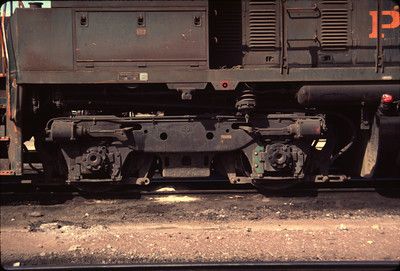
This is a “newer” style Flexicoil switcher truck.
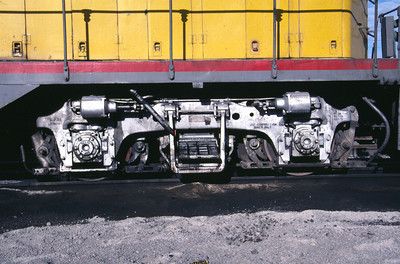
A standard Blomberg “B” freight truck. Most GP locomotives and the older F units rode on this. The swing hanger frames the spring arrangent, there is another swing hanger and springs on the other side of the locomotive. The far left hand brake cylinder is long..I mean way to long, neeeds to be taken up to a 2 1/2 to 3 inch length
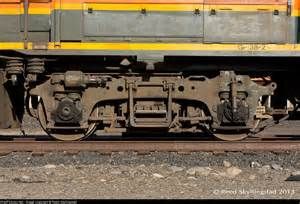
A newer Blomberg truck. There are rubberized component in the swing hanger. The Shock is a dampening tool, that helps transfer the traction energy evenly over the rails. There is another caddy corner on the opposite side.
Last updated September 04, 2014



No comments.